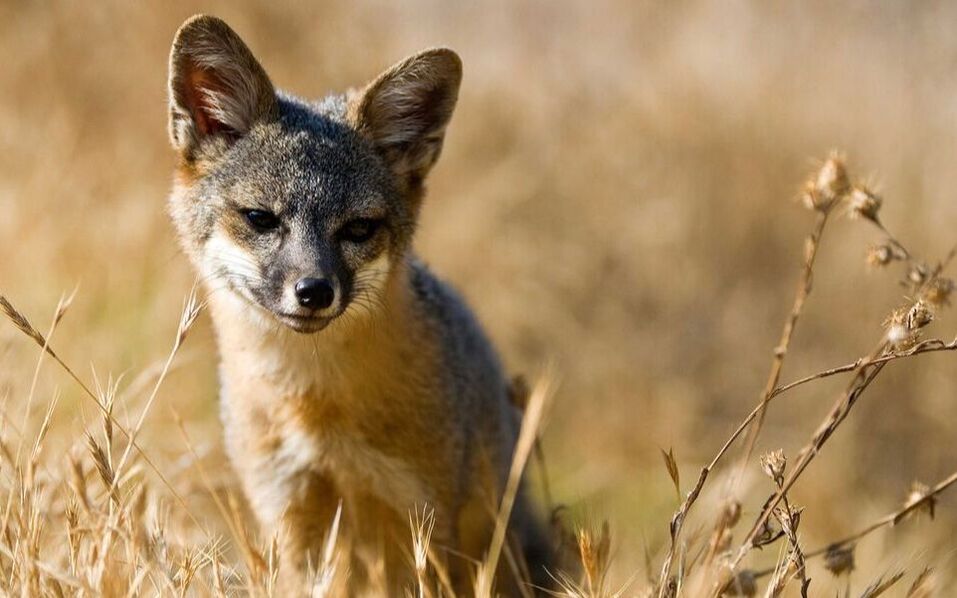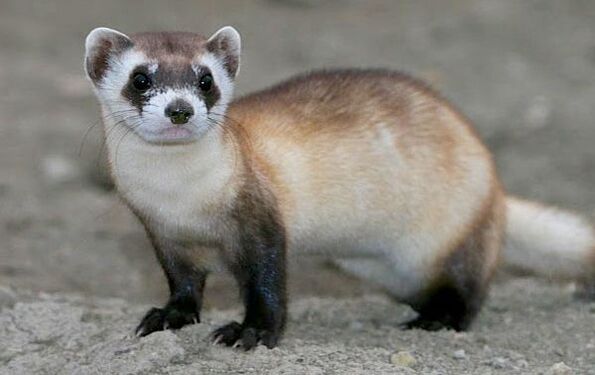Microbial Natural History
Channel Island FoxesFollowing our previous research on the microbiome & disease in Santa Catalina Island foxes, we are characterizing the host-associated microbiome across all six subspecies of Channel Island foxes.
Collaborating Organizations: Friends of the Island Fox, Catalina Island Conservancy, The Nature Conservancy, US Navy, US National Park Service, Institute for Wildlife Studies, Smithsonian Institution, Princeton University (Photo Credit: Ian Shive) |
Island Spotted SkunksIsland foxes & island spotted skunks are the top two terrestrial carnivores in California's Channel Islands. To better understand their ecology, we are comparing island fox & skunk microbiomes across two islands.
Collaborating Organizations: Friends of the Island Fox, The Nature Conservancy, US National Park Service, Smithsonian Institution, Princeton University (Photo Credit: Adam Dillon) |
Black-footed FerretsWe are exploring the role of commensal microbial communities in gastro-intestinal & reproductive health in captive black-footed ferrets managed by the Smithsonian Conservation Biology Institute.
Collaborating Organizations: Smithsonian Institution, George Mason University, National Black-Footed Ferret Conservation Center, Prairie Wildlife Research, US Fish & Wildlife Service (Photo Credit: Michael Lockhart / USFWS) |
Epigenetic Gene Regulation
Male Infertility in CaptivityCaptive-housed black-footed ferrets exhibit reduced reproductive success compared to their wild-born counterparts. We are exploring the role of DNA methylation in driving these differences across three tissue-types: blood, testes, & sperm.
Collaborating Organizations: Smithsonian Institution, George Mason University, US Fish and Wildlife Service (Photo Credit: Kim Fraser / USFWS) |
Compensating for Low Genetic VariationChannel Island foxes are among the most genetically depauperate mammals in the world, yet they show few signs of inbreeding depression. We are exploring whether epigenetic gene regulation can help compensate for low levels of genetic diversity & maintain health.
Collaborating Organizations: Friends of the Island Fox, Catalina Island Conservancy, The Nature Conservancy, US Navy, US National Park Service, Institute for Wildlife Studies, Smithsonian Institution, Princeton University, University of California Los Angeles (Photo Credit: Chien Lee) |
Wildlife Genetics & Genomics
Genetic Pedigree ReconstructionWe reconstructed the pedigree of Yellowstone National Park gray wolves using genome-wide data. This allows us to explore the genetics underlying phenotypic traits such as aggression & disease severity.
Collaborating Organizations: US National Park Service, Princeton University, University of California Los Angeles (Photo Credit: Dan Stahler / NPS) |
Genomics Underlying DiseaseWe discovered that genomic variation inversely correlates with disease severity in Yellowstone National Park wolves. We further identified 410 genomic variants associated with severe sarcoptic mange symptoms.
Collaborating Organizations: US National Park Service, Princeton University, Pennsylvania State University (Photo Credit: Jacob W. Frank / NPS) |
Urban Colonization EcologyWe characterized the genetic effects of urban colonization in two populations of canids: coyotes colonizing New York City, NY, USA & red foxes colonizing Zurich, Switzerland.
Collaborating Organizations: Princeton University, Fordham University, American Museum of Natural History, Mianus River Gorge, University of Zurich, Natural History Museum Fribourg, National Institutes of Health (Photo Credit: L. Hamelbeck-Galle/stadtwildtiere.at) |








